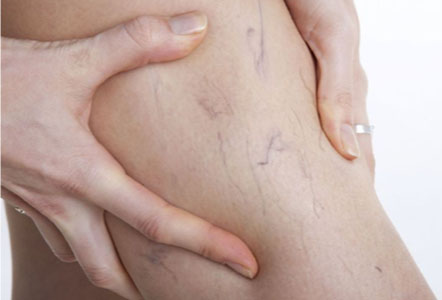Despite what many of us might think, vascular lesions can happen to anyone at any age. Since lesions further develop as a result of sun exposure, blood vessel problems are becoming a growing concern. These lesions are easily treated and can further elevate self-confidence and overall health with the appropriate care and treatment. In our last post, we talked about pigmented lesions, now we’ll take a closer look at vascular lesions.
What are Vascular Lesions
Our body’s interconnected web of blood vessels is called the vascular system; which includes the arteries and veins. Blood vessel lesions are irregularities of the skin and underlying tissues, often referred to as a birthmark. Vascular lesions can be classified in three categories: Hemangiomas, Vascular Malformations, and Pyogenic Granulomas. Despite having a similar appearance at times, these birthmarks all have separate origins and require different treatments.
How do They Occur?
There are a number of reasons why vascular lesions can develop, including both natural and environmental factors. Photodamage, genetic makeup, and aging are only some of the factors that lead to vascular lesions. The condition is thought to be caused by an inherited genetic predisposition, which is then aggravated by physical factors such as skin irritation and UV damage. However, researchers believe there may be a genetic anomaly that occurs during embryonic development that creates these lesions.
Treatment
As laser treatment for vascular and vein problems has grown in popularity, dye lasers have become the most popular treatment for vascular problems. In addition to efficiently using light energy, the treatment also uses cold sapphire tips to deliver cooling to the surface of the skin.
Depending on the size, type, and location of your vascular lesion, the number of treatments required to remove it will ultimately vary. It will be a dynamic process of evaluating the level of treatment needed as the treatment progresses. Your laser technician will be able to provide you with a rough estimate of how many treatments you will need. Approximately three to five laser sessions are usually recommended for optimal results. The results normally last between 3 years, although again, this can vary.
Whether you realize it or not, vascular lesions can affect any age group. Therefore, regardless of age, it’s important to monitor one’s health and get any vascular lesions checked out. The benefits of taking these precautions are significant for maintaining health, from the inside out.
Written by: Tali Pinsker


